Peoria Audubon Society is a local affiliate of both:
National Audubon Society & Illinois Audubon Society

Birding the Illinois River: Emiquon
Field Trip: Sat. Aug. 15, 2009 Page 1 2
Photo Gallery:
After driving 2-3 miles along the Pump House Road, which turned into a levee between the Illinois River Channel and Emiquon, we turned around and headed back. We couldn't resist watching the flock of distant egrets and herons.

Flock of Egrets at Emiquon
In the distance, perhaps 1-2 miles, you can view the levee that has the main road to the Emiquon entrance - Illinois Route 78 & 97.
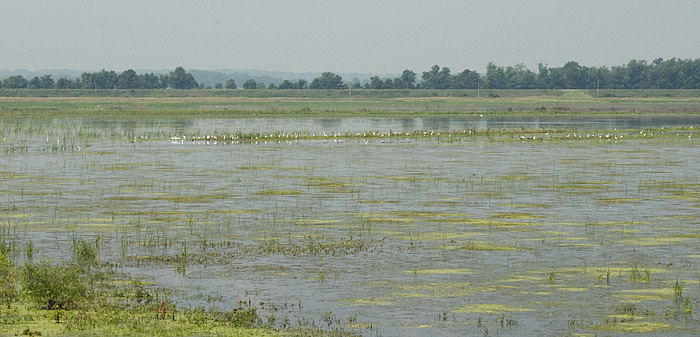
Wider View of Egrets at Emiquon
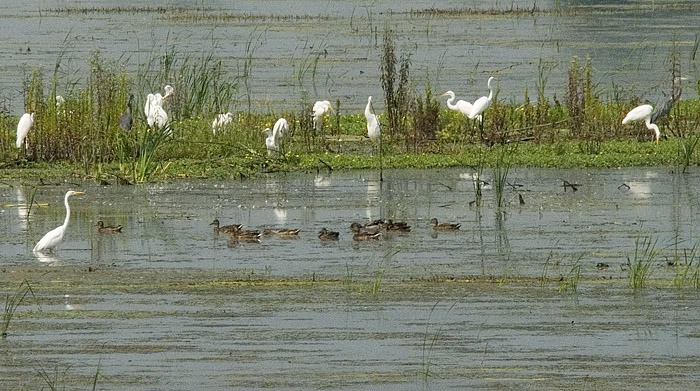
Close View of Great Egrets, Great Blue Herons, and Mallard Ducks
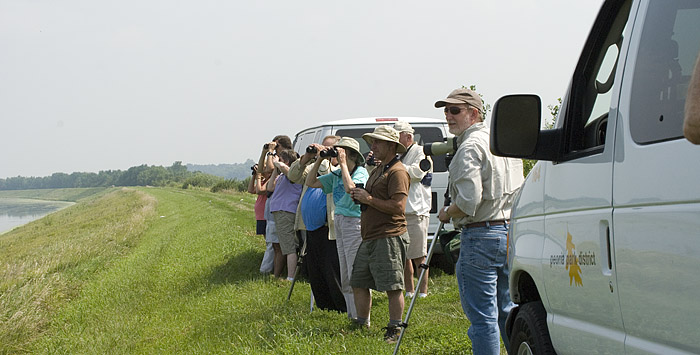
Birding from the Emiquon Levee
In the above image, everyone got out of the vans to take in the view. The spotting scopes came in quite handy with the long distance views.
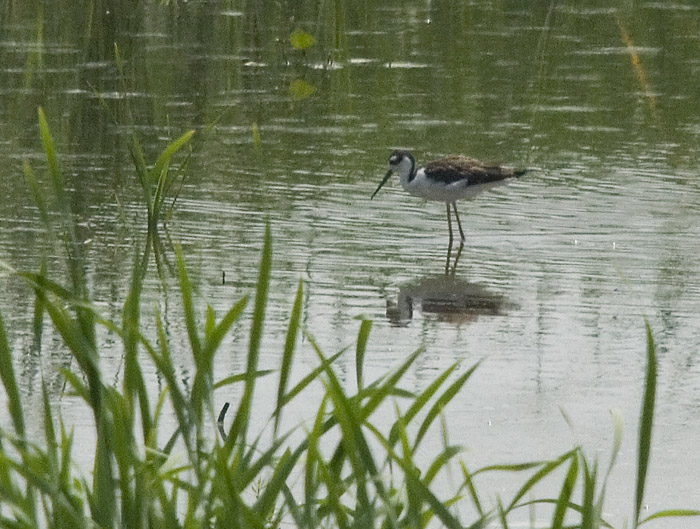
Black-necked Stilt
From the van, we were able to spot another Black-necked Stilt at Emiquon. Afterwards, we headed off for a quick stopover at Bell's Landing at Banner Marsh, then on to Peoria to go to the facility at Greater Peoria Sanitary District (GPSD), off Darst Street. Maury had arranged for special permission to try birding at their waste treatment facility.
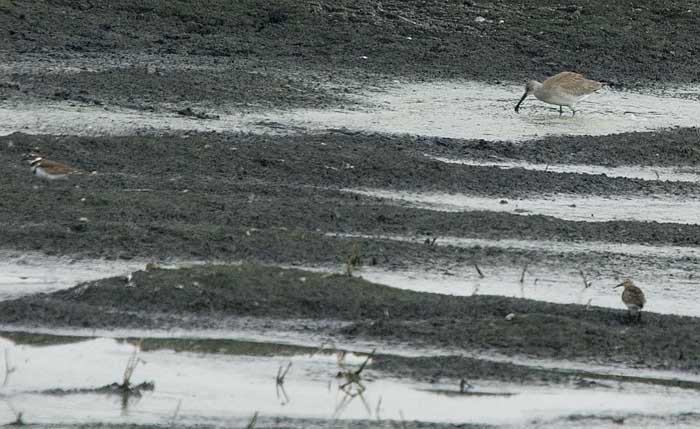
Size Perspective: Willett (large) with Sandpiper and Killdeer
GPSD has a large number of settling pools that are used to treat wastewater before pumping it back into the river. Many of the treatment pools that are near the river channel, have in effect become "mud flats," a habitat that draws shorebirds in during their fall migration. And, we were treated to having several opportunities for close viewing of shorebirds. In the above image, the Willet, which is significantly larger than the killdeer and sandpiper, is probing the mud for food.
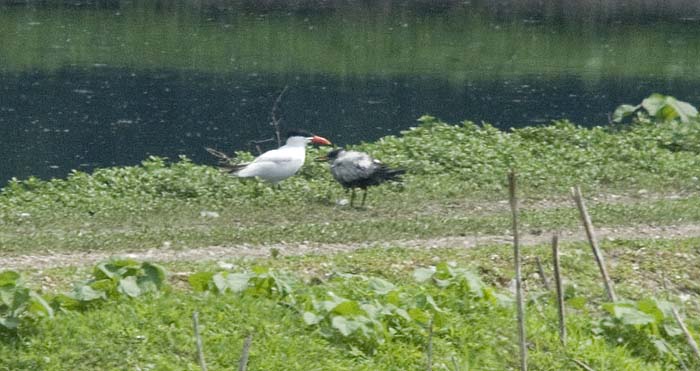
Caspian Terns: Adult with Juvenile
As we were looking around, we noticed a Caspian Tern flying around. Later in the distance, it came in to land on one of the dikes that separated two of the pools. It was apparently still taking care of a juvenile tern. Mike commented that you can always spot a tern, because they are the large flying bird with a big carrot in its head.
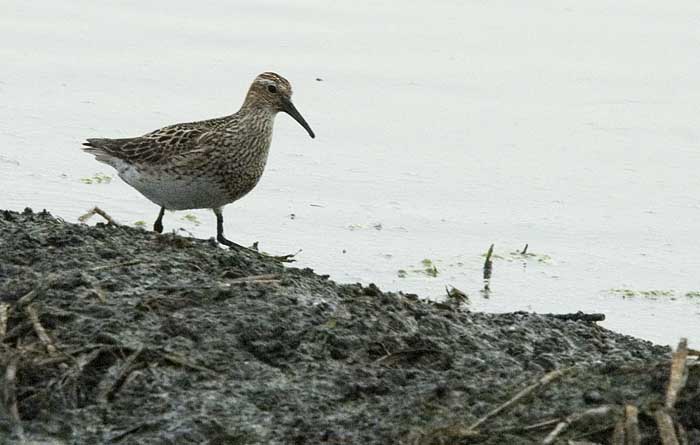
Pectoral Sandpiper at Greater Peoria Sanitary District
Using the van as a moving blind allowed us to get a close snapshot of the Pectoral Sandpipers in these two images.
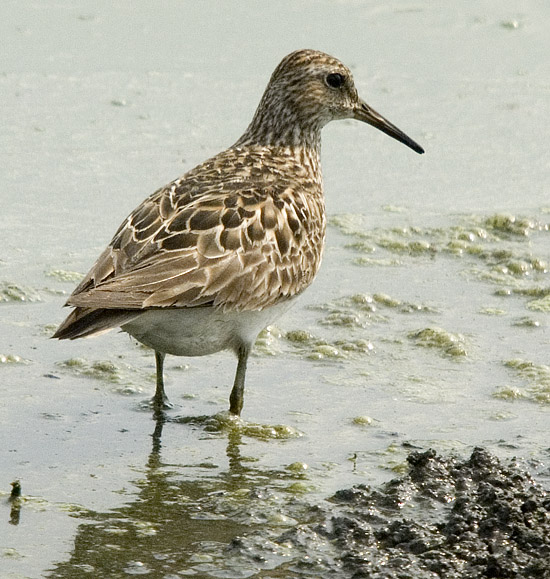
Close View of Pectoral Sandpiper on "Mudflats"
The sun at 3:00 in the afternoon provided bright illumination to bring out the colors in the pattern of the sandpipers feathers.
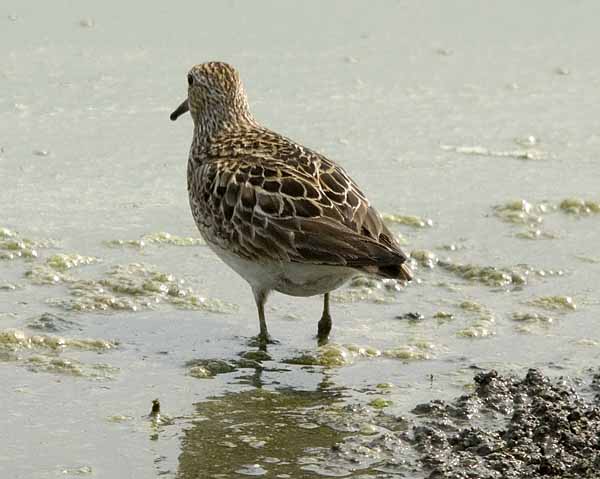
Close View of Pectoral Sandpiper
From the nutrients in the sewage treatment process, many of the pools had lots of insects that were apparently providing food for the shorebird. Several people speculated that the bubbles in the flat were likely oxygen, from photosynthesis of algae.
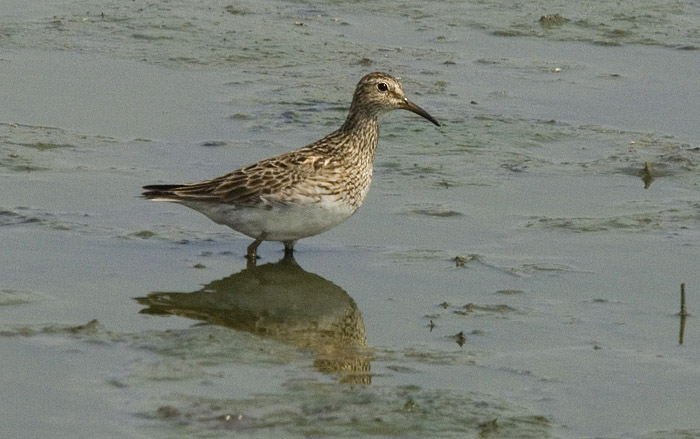
Pectoral Sandpiper
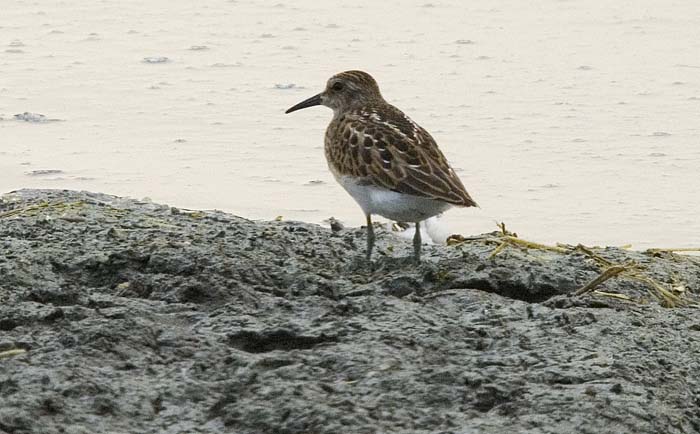
Least Sandpiper (Much Smaller than Other Sandpipers)
The Least Sandpiper is much smaller than the other shorebirds, although without a side-by-side comparison, it is difficult to tell from the photo. In any case, you can see the shorter length of the neck on the above bird.
According to the Sibley Field Guide to Birds, the size differences among the adult shorebirds is rather dramatic.
-
Willet: 215 grams
-
Killdeer 95 grams
-
Pectoral Sandpiper: 73 grams
-
Solitary Sandpiper: 50 grams
-
Least Sandpiper: 20 grams
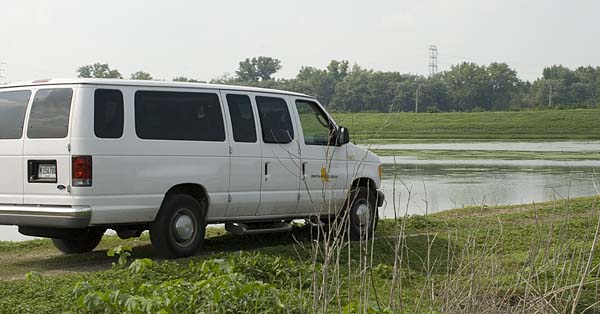
Peoria Park District Transportation at GPSD
John Mullen and Mike Miller carefully drove us over the lane between the dikes at GPSD
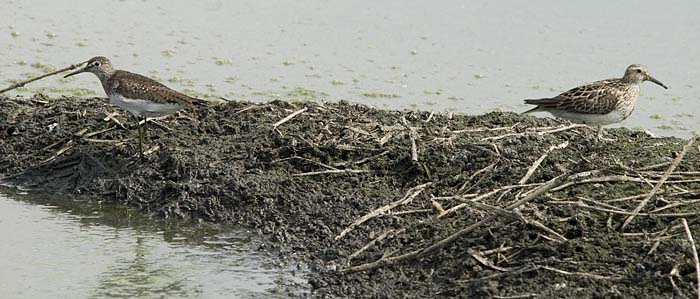
Solitary and Pectoral Sandpiper Comparison
One of the ongoing questions that kept coming up when viewing distant sandpipers was, "Is that a Solitary or Pectoral Sandpiper?" Frequently, between the great distance, and the inability of getting a good view of markings, the distinction was difficult. As we drove by one of the pools, Dennis was able to get a photo that had both of these Sandpipers. In the images below, both were taken from the same distance, and more importantly, the same bright direct lighting conditions.
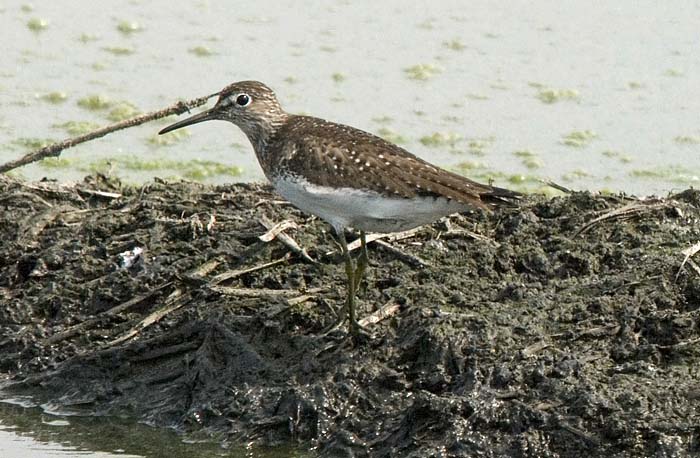
Solitary Sandpiper
According to the Sibley Guide, with the Solitary Sandpiper, note the white "spectacles" around the eyes and the slightly smaller body.
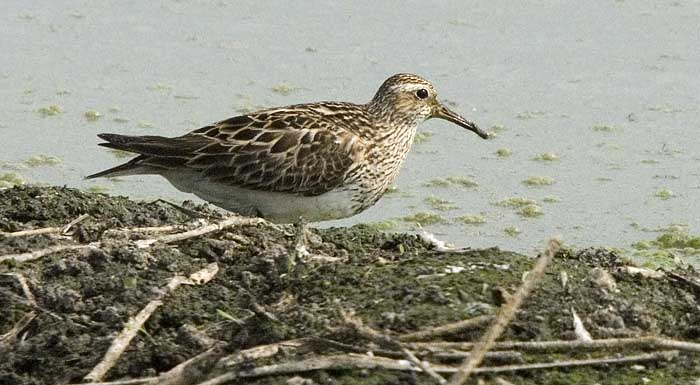
Pectoral Sandpiper
With the Pectoral Sandpiper, note the dense streaking on the breast that ends abruptly at a white belly with a straight-line border. The sharp distinction between streaking and white belly is more apparent
The Peoria Audubon Society wishes to thank John Mullen and Maury Brucker for organizing the event. Maury scouted the area ahead of time and negotiated special permission for us to visit these areas. John not only arranged for the Peoria Park District vans, but also took care of the logistics for providing drinks, snacks and a meal that was served in the break room at Dickson Mounds.
And, we would also like to thank The Nature Conservancy and Greater Peoria Sanitary District, who opened up areas that do not have public access. To see how close the GPSD facility is to the Illinois River, click for Yahoo Satellite Map.
Having the opportunity to share these field trips with knowledgeable experts and with an enthusiastic group of people was a special reward in itself.